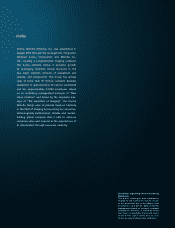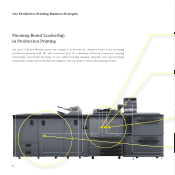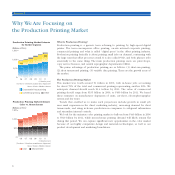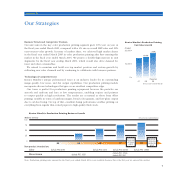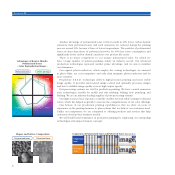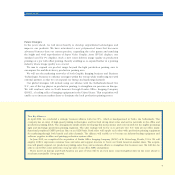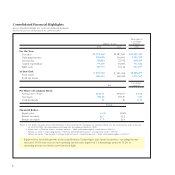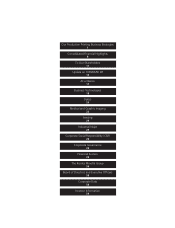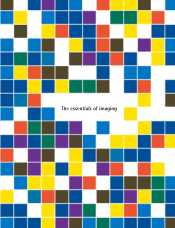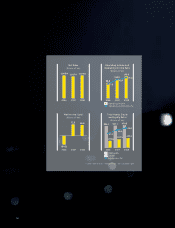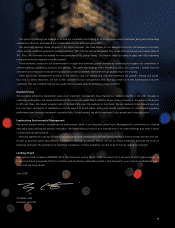Konica Minolta 2008 Annual Report Download - page 6
Download and view the complete annual report
Please find page 6 of the 2008 Konica Minolta annual report below. You can navigate through the pages in the report by either clicking on the pages listed below, or by using the keyword search tool below to find specific information within the annual report.
Why We Are Focusing on
the Production Printing Market
What Is Production Printing?
Production printing is a generic term referring to printing by high-speed digital
printer. The term encompasses office printing, on-site internal corporate printing,
commercial printing and what is called “digital press” in the offset printing industry.
Production printing basically is about printing small jobs on demand, contrasting with
the large runs that offset processes entail. It is also called POD, and both phrases refer
essentially to the same thing. The main production printing users are print shops,
copy service bureaus, and central reprographic departments (CRDs).
The prime advantage of production printing are as follows. (1) short-run printing,
(2) short turnaround printing, (3) variable data printing. These are the growth areas of
the market.
The Production Printing Market
This market was worth around ¥1 trillion in 2006, with in-house jobs accounting
for about 70% of the total and commercial printing representing another 20%. We
anticipate demand should reach ¥1.4 trillion by 2011. The value of commercial
printing should surge from ¥195 billion in 2006, to ¥490 billion by 2011. We based
these estimates on manufacturer shipments of units, cut-sheet, electrophotographic
system and dry toner.
Trends that enabled us to make such projections include growth in small job
runs amid expansion in the direct marketing industry, increasing demand for short
turnarounds, and rising in-house production in companies to safeguard information
and streamline internal controls.
We look for the mainstay color printing market to balloon from ¥440 billion in 2006
to ¥810 billion by 2011, while monochrome printing demand will likely remain fl at
during that period. We can capture signifi cant new opportunities in the color market
because of our highly competitive design and materials technologies, as well as our
product development and marketing foundations.
Production Printing Market Estimate
by Market Segment
0
5,00
1,000
1,500
06
95
195
670
100
490
810
07 08 09 10 11
(Cut-sheet / Based on manufacturer shipments)
Other
Corporate/in-house printing
Commercial printing
Source: Konica Minolta estimate
(Calendar years)
(Billions of Yen)
Production Printing Market Estimate
Color vs. Monochrome
(Billions of Yen)
0
500
1,000
1,500
06 07 08 09 10 11
Source: Konica Minolta estimate
(Cut-sheet / Based on manufacturer shipments)
Color Monochrome
(Calendar years)
440
520
810
590
SECTION I
4


